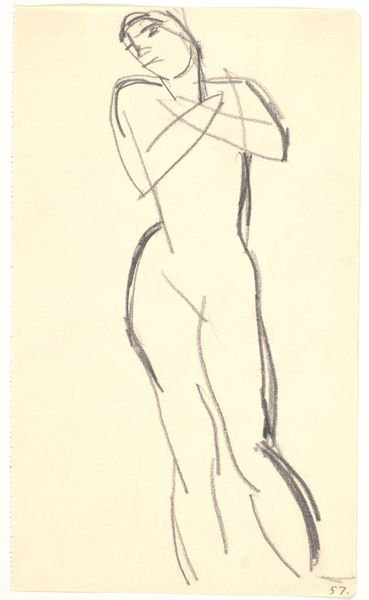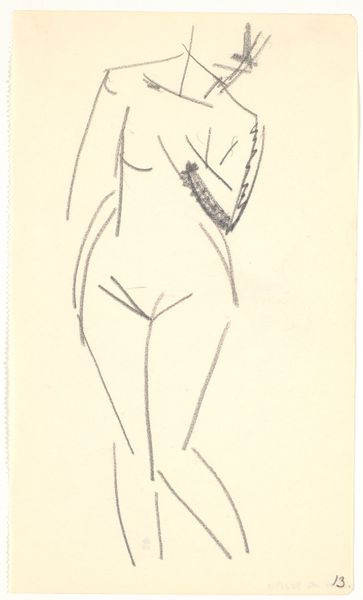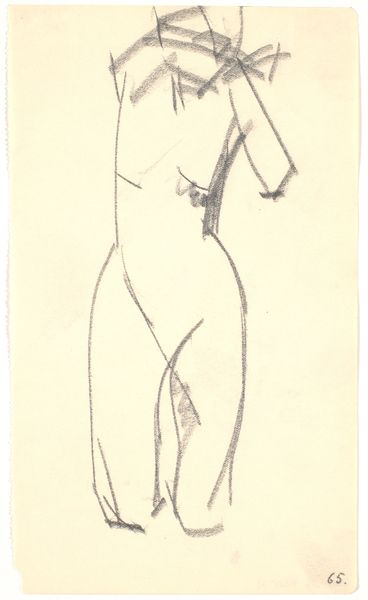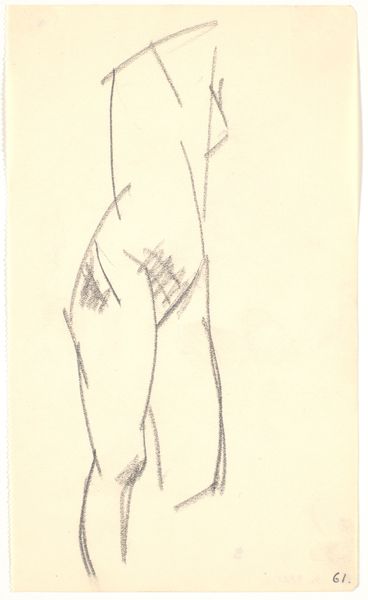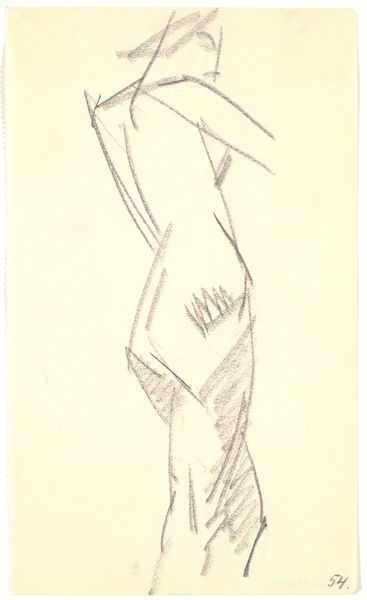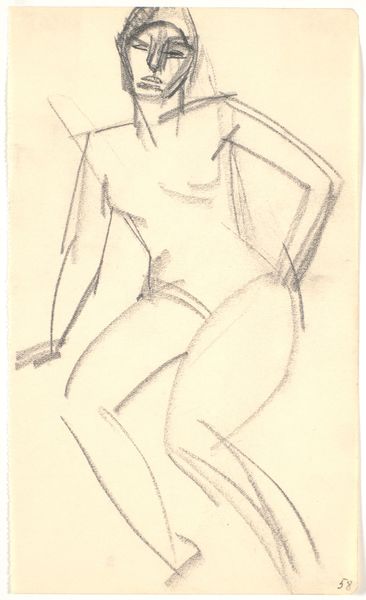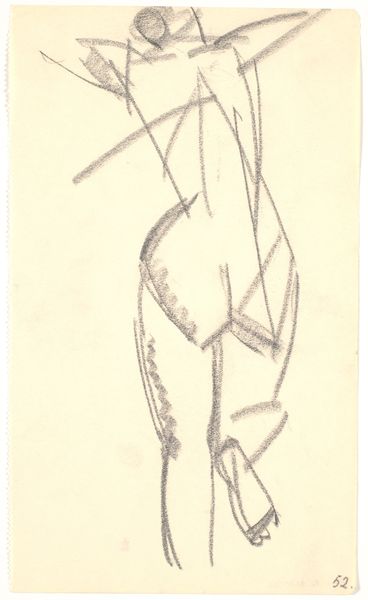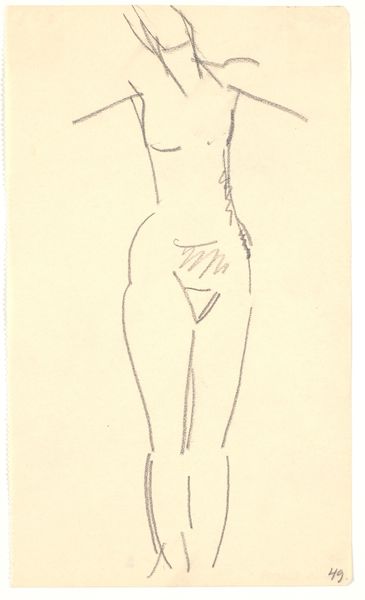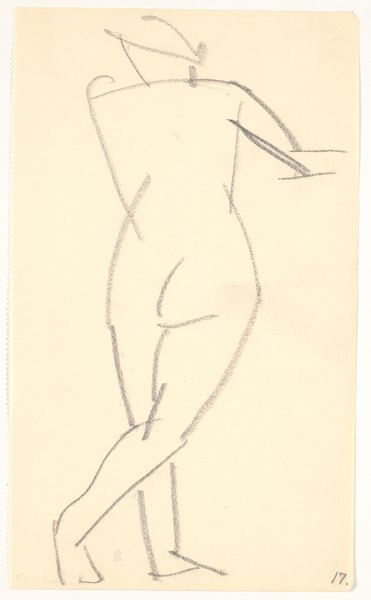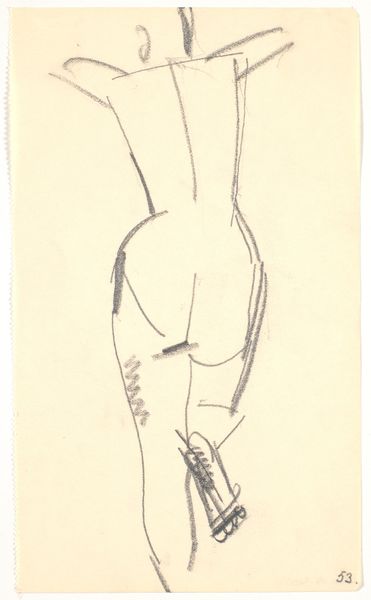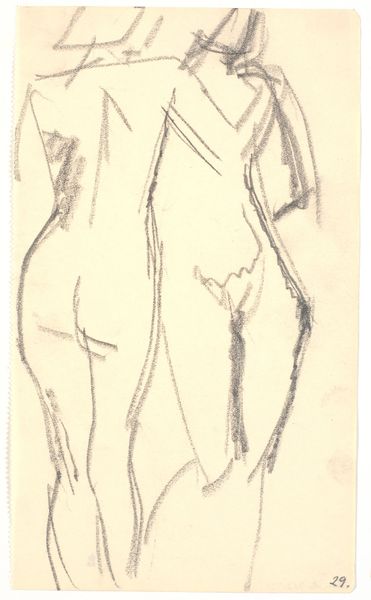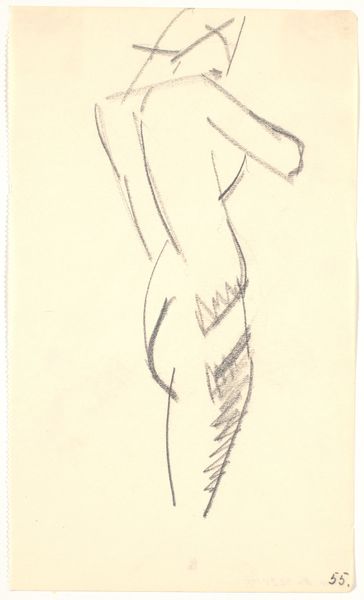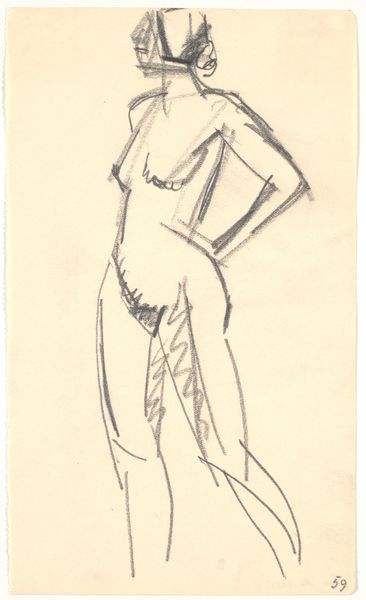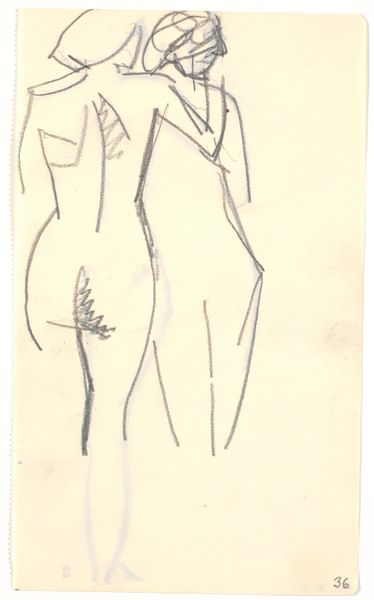
drawing, pencil
#
drawing
#
figuration
#
pencil
#
expressionism
#
nude
Dimensions: 209 mm (height) x 124 mm (width) (bladmaal)
Editor: This is "Liggende model," a pencil drawing created by Karl Isakson between 1914 and 1915, housed at the SMK. It looks so minimal. What can we make of a sketch of a nude done with such simple lines? Curator: What do you see evoked by those seemingly simple lines? Does it communicate a fleeting moment, perhaps a struggle for form? Think of expressionism—its focus is less on surface accuracy, more on inner emotion and its externalization. Consider also that during this period, rapid change and uncertainty led artists to experiment with form, stripping down to bare essentials. Do you feel the raw nerves of this time in the image? Editor: Yes, I suppose it is unsettling. But it almost feels unfinished, as though the artist couldn’t, or wouldn’t, commit to defining the form. Curator: Perhaps that incompletion is itself the point. Think of the psychological weight of a world on the brink of war. Isakson simplifies, leaving space for the viewer to project. The bare lines don’t just depict a nude; they carry an anxiety, a sense of vulnerability laid bare, culturally embedded. Editor: I didn't think about the connection between form and anxiety. Does the crossed arm gesture have meaning? Curator: Indeed. Consider the enduring symbol of crossed arms – defensiveness, a shielding from an unseen threat. In an era ripe with social and political tensions, Isakson utilizes a symbol understood across time and cultures to subtly yet potently convey a feeling. Do you think its suggestive potential shifts when we read the symbolism in her posture? Editor: Definitely! I’ll never look at a simple sketch the same way again. Curator: Art invites us to find layers of meaning, cultural memory, in every image. A line might just be a line, or it can resonate through centuries.
Comments
No comments
Be the first to comment and join the conversation on the ultimate creative platform.
